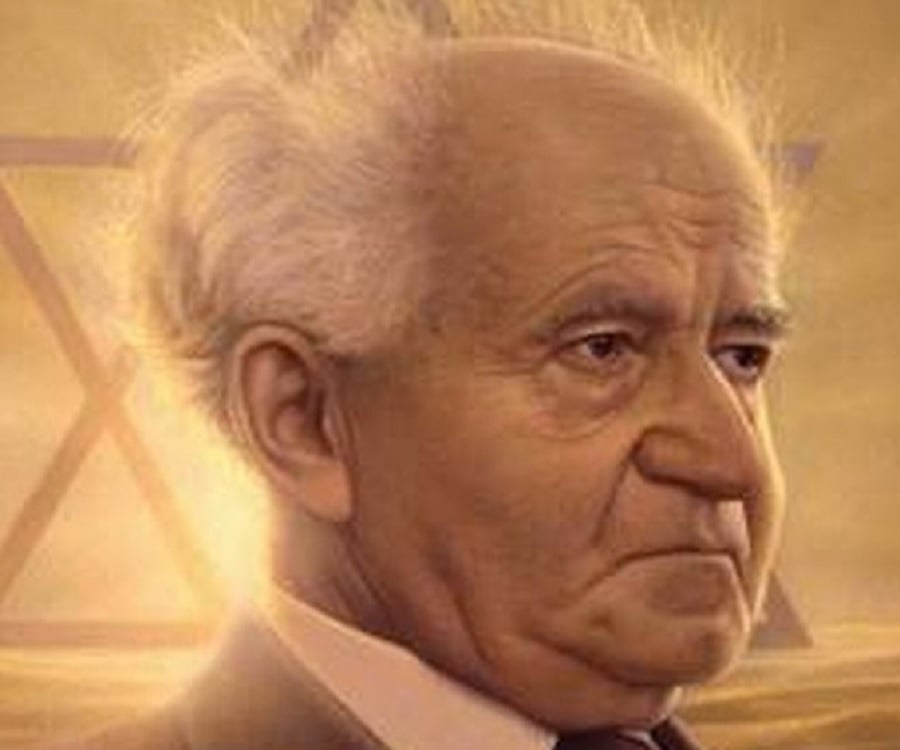
When the state of Israel achieved nationhood in 1948 it was seen as an ethical and moral experiment because of the role the Holocaust played in its creation, along with its dominant Jewish culture. Residing in a geographical region that had nothing but hatred for the new state it would be difficult to expect Israel to maintain the high standards that were expected of it. The difficulty would morph into a nation that had to protect itself from invasion, and once that was beaten back it had to deal with constant attacks across its borders. As a result Israel would take on the character of other countries and adopt measures that ran counter to expectations. The evolution of Israel into an intelligence and military power to meet the needs of its citizens is explored in detail in Ronen Bergman’s new book, RISE AND KILL FIRST: SECRET HISTORY OF ISRAEL’S TARGET ASSASSINATIONS. Bergmann is an Israeli journalist who writes for Yedioth Ahronoth and has received the highest prize offered for journalism in Israel. Bergman’s monograph begins with the end of the Second World War and continues through today. It is based on over 1,000 interviews, thousands of documents, and runs to about 650 pages.
What is clear from the outset is that Israeli leaders were firm believers in the Hammurabi Code of “an eye for an eye.” This can be seen from the outset as Israel wanted to ethnically cleanse as many Palestinians as possible (Plan Dalet)), from towns in the West Bank and Gaza Strip. Bergman traces the creation of a “machine” which came about through the “marriage of guerrilla warfare and the military might of a technological powerhouse.” Bergman explores the political leaders, operatives, methodology, and deliberations that resulted in many successes, but a number of important failures also. One of the major themes of the book rests on the moral cost of this policy and how two separate legal systems developed in Israel; one for ordinary citizens, and one for the intelligence community and military establishment. The template became a model for other countries, particularly the United States after 9/11 which mirrored Israeli intelligence gathering and assassination techniques.
(Ariel Sharon, circa 1967)
Bergman does an excellent job explaining the Israeli rationalization for targeted killing. He explores in depth the history that preceded its implementation, its legal justification, and the resulting bifurcation in Israeli society. Since Israel suffers from a deficit of men and equipment when compared to its enemies, early on they decided to rely on internal security and intelligence gathering services for their survival. The program began under Israel’s first Prime Minister, David Ben-Gurion who effectively set up the extrajudicial system to carry out assassinations. By 1949 Ben-Gurion created the Mossad (covert activities beyond the country’s borders)), along with AMAN (the military intelligence arm that supplies information to the IDF); and Shin Bet (responsible for internal intelligence, counterterror, and counterespionage). These three services still remain the core of Israeli intelligence activities to this day.
There are a number of key events and individuals that are responsible for the evolution of Israeli tactics. Israel faced “Fedayeen,” Arab terrorists led by an Egyptian, Mustafa Hafez, who crossed into Israel in great numbers after the War of Independence and killed numerous Israelis. By 1956, the Suez War broke out and after the Gaza Strip was conquered Israeli intelligence came across Hafez’s list of operatives who had terrorized Israel for years. Ben-Gurion ordered that everyone on the list should be killed and one by one operations were carried out. This section of the book reads like a Daniel Silva novel. From 1956-1967 attacks were drastically reduced as the Arabs realized the price they would pay from Israeli retribution. However, the Egyptians began to employ German scientists to develop long range missiles. Bergman provides a detailed chapter on the episode and one realizes that once a threat is perceived, Israel reacts. In this case the assassination of German scientists, kidnappings, and recruiting certain scientists to be used against Egypt, i.e., Otto Skorzeny, Hitler’s Operational Commander.
(Meir Dagan, former head of Mossad)
The book encompasses more than a retelling of numerous targeted killings. Bergman discusses a series of operations whose focal point was not assassination. For example, the high jacking of an Iraq MIG-21 fighter by getting the pilot to defect, or allying with King Hassan II to spy on Arab leaders providing intelligence leading up to the Six Day War. Further, throughout the 1950s and 60s Israel was preoccupied by Egyptian President Gamal Nasser and as a result Israeli intelligence missed the creation in 1964 of the Palestine Liberation Organization under Yasir Arafat and Abu Jihad. After the 1967 War, the PLO launched numerous attacks against Israel. As Israel attempted to assassinate Arafat, his popularity among Palestinians increased, and enlistments in the PLO rose dramatically as the Palestinian leader was seen as the embodiment of Palestinian nationalism.
Perhaps one of Bergman’s most interesting chapters, “Meir Dagan and His Expertise” the author describes how Israel dealt with this increasing threat. It is here that we see assassination and killing implemented as standard policy. The Israeli government unleashed Ariel Sharon who commanded Israel’s southern frontier. By the end of 1969, Sharon created a new unit under Meir Dagan, and using intelligence gathered by the Shin Bet went into Gaza to murder Palestinian operatives and leaders. After the PLO responded by slaughtering an Israeli family driving along the Gaza road, Shin Bet and IDF Special Forces wiped out terrorism in the Gaza Strip through 1972 by employing methods that went beyond Israeli domestic law. This was effective until the Jordanian Civil War produced a new Palestinian terrorist group, Black September.
(Results of of an Israeli missile target killing)
Bergman’s command of his material is superb, as his analysis down to the last detail. He takes the reader into areas that no previous author has done. Numerous operations are described including their conception and implementation. Among the many that are discussed include the “Spring of Youth” operation that resulted in the death of three top PLO officials and 35 PFLP terrorists in Beirut in October, 1972, which netted documents that would lead to the destruction of the Fatah network in the West Bank, and the killing of all the assailants related to the 1972 Olympic Munich massacre by elements of Black September. However as successful as the operation was it created tremendous hubris on the part of Israeli leaders leading them to believe the Arabs would not attack further. This feeling of superiority resulted in rejection of Anwar Sadat’s peace overtures which led to the outbreak of the Yom Kippur War.
The Salameh operation is described in detail and produced a number of surprising pieces of information. For example, Salameh had been recruited by the CIA and was America’s back channel to Arafat. Both parties agreed that the PLO would not launch attacks in the United States, and Salameh would be protected. However, Israel viewed Salameh as the man who engineered the Olympic massacre and waited until January, 1979 to kill him with a car bomb in Beirut. Another example was the Israeli raid on Entebbe that resulted in the rescue of most of the Israeli hostages that were imprisoned after an airliner high jacking that was flown to Kenya. Bergman presents the planning of the raid, and once again the outcome was marked by Israeli hubris.
(the assassination of an Iranian operative)
Abu Nidal presented a different problem for Israel after his terror group killed Israel’s ambassador to England, Shlomo Argov. This was used as an excuse to invade Lebanon, when Israeli attacks led by Meir Dagan failed to provoke a PLO response, a move that Middle East expert, Robin Wright led to “Israel’s Vietnam.” Bergman highlights the most important aspects of the war, especially the role played by Sharon. The Israeli general had his own agenda in launching the attack; first, to redraw the map of the region with a Christian Lebanon and the movement of Palestinians from the West Bank and Gaza to Jordan, second, his obsession with killing Arafat. Both goals were not achieved, but what was achieved was raising Arafat’s profile in the Arab world as the Palestinians were forced to leave Lebanon in August, 1982, the emergence of a new terrorist group backed by Iran, Hezbollah, and the beginning of an eighteen year quagmire in Lebanon. Sharon acted like a monarch, a law unto himself making him a detriment to Israel. Sharon overshadowed Prime Minister Menachem Begin who receded into an emotional depression as the war continued, and was replaced as Prime Minister by Yitzchak Shamir. Israel would continue its policy of targeted killing as the carnage of Munich, Maalot, Nahariya, and many others became Israel’s justification for murder and summary executions. Lebanon made the situation even worse as there were no laws to restrain the Shin Bet from torturing prisoners and on many occasions killing them.
There are numerous other highlights in Bergman’s detailed narrative. The Intifada that broke out in December, 1987 that caught the Palestinian leadership, Israeli government and intelligence officials totally flatfooted is a case in point as it eventually morphed into the Oslo Peace Accords of 1993. The Intifada saw Israel double down on targeted killings as it sought to control the images being flashed each day in the media. Israel’s main target was Abu Jihad, Arafat’s number two man and Bergman describes how he was hunted down, and at the same time missing an opportunity to also kill Mahmoud Abbas, the current president of the Palestinian Authority. Bergman makes the important point that Abu Jihad, who was not as intransigent as many others in Gaza had been alive perhaps there might have been some movement towards ending the Intifada and perhaps “Hamas might not have been able to consolidate its position to dominate large parts of the Palestinian public.” (323)
(Yasir Arafat)
As the Intifada continued the Shin Bet became very flexible in its approach to killings; employing disguise to trap suspects, demolished terrorist’s homes, and turning Palestinians into spies for Israel. The most important of which was Adnan Yassin, a mid-level activist who dealt with numerous projects in PLO headquarters in Tunis. Once Yassin was turned, he provided valuable information for over four years that helped prevent numerous attacks and contributed to a number of important targeted killings. By 1992, Yassin was discovered and executed.
As Bergman develops his narrative he integrates the history of the region and the most important historical figures into his text. None is more important than Saddam Hussein and his quest to acquire nuclear weapons. Bergman digs deep and points out that the United States and France were currying Saddam’s favor because of his ongoing war with Iran in the 1980s. It is surprising to note that the French built a nuclear reactor in Iraq and supplied him with the necessary technology to try and reach his goals. This was due to the ego of Charles de Gaulle who resented Israel’s ignoring his advice in 1967 and from that time, France, a traditional ally turned against the Jewish state. The Mossad pursued the same approach it had used against Egyptian scientists and began killing those associated with Iraq’s program. Bergman follows Israel’s military and intelligence planning that finally led to the Israeli destruction of Iraq’s nuclear reactor in 1981.
Another important individual that Israeli intelligence had to cope with was Ayatollah Khomeini whose movement overthrew Israel’s ally, Reza Pahlavi, the Iranian monarch in 1979. Khomeini was seen as an existential threat to Israel and eventually fomented trouble throughout the region and helped create and support Hezbollah, “the Party of God” during the fighting in Lebanon. This produced another cycle of violence with rockets and raids into northern Israel and Israeli target killings against Hezbollah leaders, particularly Hussein Abbas al-Mussawi who was responsible for many attacks against Israel. He would be replaced by Hassan Nasrallah as Hezbollah’s leader in Lebanon. Bergman points out that killing Mussawi may have been a mistake for Israel because he was much more liberal when it came to relations with Israel than Nasrallah who was more of a radical Shi’ite.
(President Obama and Prime Minister Netanyahu-no love lost between these two!)
This process continued in dealing with Palestinian terrorism throughout the 1990s despite the Oslo Peace Accords. Once again Bergman effectively deals with another cycle of violence. In Gaza, Hamas was a major problem and was responsible for numerous suicide attacks against Israeli civilians. Israel responded once again with an increase in targeted killings. Despite the Oslo Accords, Arafat refused to cooperate with trying to control Hamas. It would cost Prime Minister Shimon Peres his office and he would be replaced by Benjamin Netanyahu effectively ending the peace process. Bergman points out that Hamas suicide attacks were designed to end the peace process, and with the arrival of Netanyahu as Prime Minister, they achieved their goal.
In the large number of operations that Bergman recounts he is careful to balance successes with failures, i.e., the attempt to kill Khaled Mashal, a Hamas leader in Amman totally backfired and cost Israel dearly. Another would be the attempt to kill Hezbollah operative, Haldoun Haidar that resulted in a deadly ambush for the IDF. These failures along with the ongoing threats from an enemy that used tactics that Israel had never grappled with before led to the reorganization of intelligence agencies under new leadership, a key of which was Ami Ayalon to head the Shin Bet and the introduction of new technology. New surveillance techniques, integration of computer systems, a new approach to network analysis, the use of real-time intelligence, hardware and software designed to integrate different services and operational bodies led to a series of success of which the killing of the Adwallah brothers and capturing the Hamas military archive stands out. The advances made by Shin-Bet was replicated throughout the entire country. Bergman correctly argues if these changes had not been implemented it would have been even more difficult for Israel to deal with the Second Intifada that broke out in 2000.
Bergman discusses the changes in Israeli governments and its impact on “killing strategies.” Netanyahu’s government was plagued by charges of corruption and an increase in suicide bombings, and by May 1999 was replaced by the Labor Party under Ehud Barak, who as a soldier had been a master of special operations. Barak’s military lessons did not carry over to the world of politics and diplomacy. He was able to withdraw the IDF from Lebanon, but failed in his approach to Arafat at Camp David in 2000. This failure in conjunction with Ariel Sharon’s visit to the Temple Mount helped touch off a second Intifada. The increase in suicide bombings toppled Barak’s government and brought to power Sharon as Prime Minister leading to an all-out offensive against suicide bombers. With no real strategy to confront events Israel turned its usual approach, increased assassinations. When this failed Israel altered this strategy by going after much more low level targets employing advanced drones retrofitted with special targeting technology and missiles. In addition, they began to acknowledge their responsibility for attacks and provided explanations for each. Once the 9/11 attacks took place the Israeli leadership used the new climate in the world to legitimize its assassination policy to break the back of the Intifada.
(Iranian diplomat Reza Najafi complaining about Israeli policy at the UN)
To his credit the author delves into discord within the intelligence community over certain actions. Reflecting his objectivity Bergman discusses certain planned operations that brought about refusals on the part of certain participants to carry out orders when they believed there would be too much collateral damage. The debates between higher ups in this process are also presented and it was rare that there was unanimity over a given plan. The possible assassination of Sheik Yassin is a case in point because Israel’s legal justification for targeting anyone rests on the principle that a direct link between that person and a future terrorist attack was at hand. Finally, in March, 2004 Yassin was killed, as was his successor Abd al-Aziz-Rantisi one month later. Israel had instituted a new policy that political targets, in addition to operational targets were fair game because of the increase in suicide attacks that also included the use of women for the first time. The suicide attacks finally ended with the death of Arafat and the coming to power of Mahmoud Abbas who finally cracked down on Hamas.
Bergman pays careful attention to the shifting balance of power in the Middle East as it pertains to Israeli targeting policies. Yassin’s assassination was a turning point as he opposed any links with Iran, however once he was dead Hamas’ leadership agreed to work with Iran and the Teheran regime gained a strong foothold in Gaza. At the same time new Syrian President Bashir Assad decided to ally with Iran producing a radical front of Hamas, Hezbollah, Syria, and Iran. Israel’s response was twofold. First, Sharon appointed Meir Dagan to totally rework Mossad which Bergman describes in detail, and secondly, have Israel’s intelligence services network with those of Egypt, Saudi Arabia, and Morocco reflecting the Iranian common enemy. The result was a string of targeted killings on the part of Israel.
(Former Israeli Prime Minister Yitzhak Rabin)
Israel has faced a number of threats throughout its history and no matter the obstacle it seems to land on its feet. Over the last decade it has dealt with abducted soldiers that led to war in 2006 with Hezbollah, the creation of a Hamas state in Gaza after the split in the Palestinian community, the destruction of the Syrian nuclear reactor at Deir al-Zor in 2007, and the targeted assassination of Hezbollah leaders and Iranian nuclear scientists. But these successes have created further hubris by reasoning that it did not have to engage diplomatically, just rely on its intelligence community and technology. As in the past this hubris could lead to tragedy. As Bergman concludes Israel has produced a “long string of tactical successes, but also strategic failures.”
Bergman’s presentation of intricate details and analysis of all aspects of Israel’s targeted killing policy has produced a special book. His access to the major personalities involved, his documentation of numerous operations and their repercussions, and how his subject matter fits into the regional balance of power is beyond anything previously written and should be considered the standard work on the history of the Israeli intelligence community.
(David Ben-Gurion)


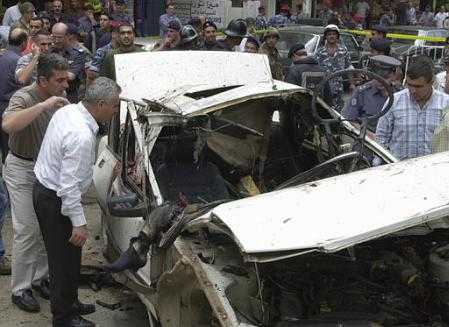

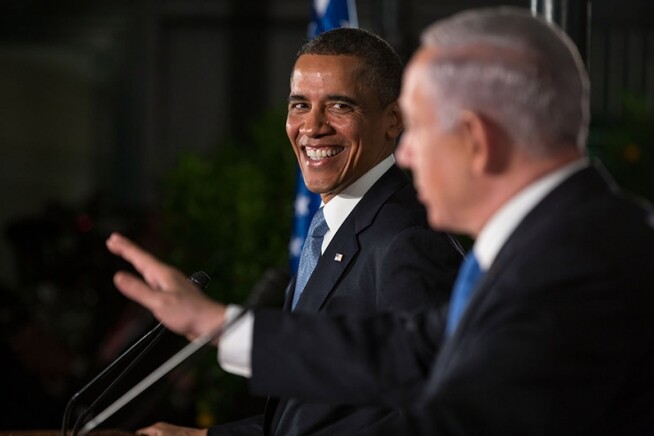
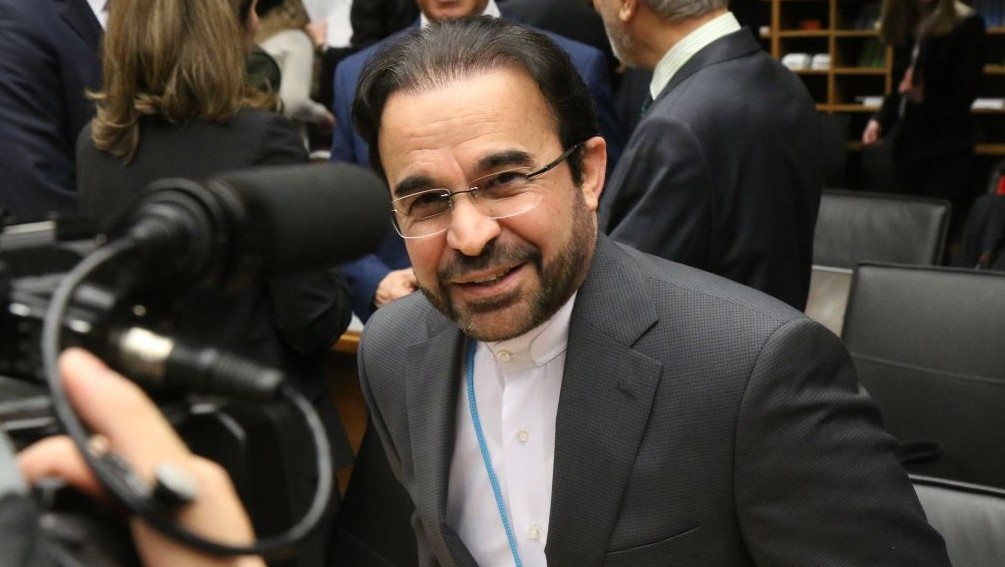

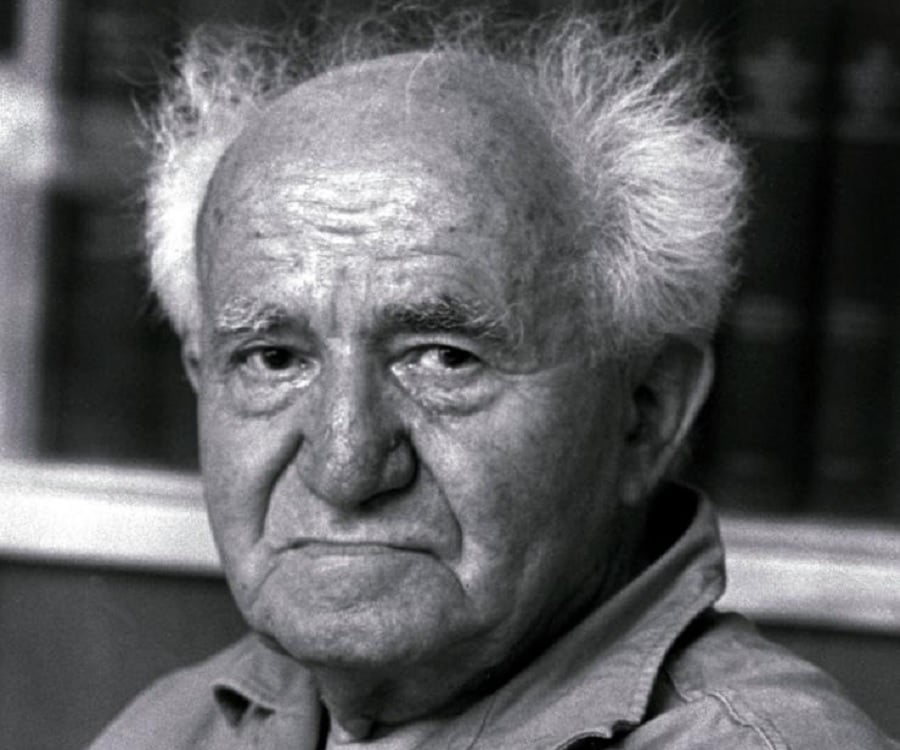
Comments
Post a Comment